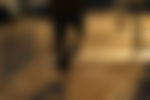

The debate on whether bicycles should bear registration plates has been going on for quite a long time now. These discussions have further prompted questions revolving around the unbridled freedom and the faulty regulatory structure that often two-wheeled commuters take advantage of. Amidst the confusion, Lord Hogan-Howe, the former Metropolitan Police Commissioner has advocated the introduction of number plates on bicycles.
However, the proposal yet again gave rise to further controversy owing to the challenges and potential drawbacks. Whether to hold cyclists accountable for their actions and curb the rate of dangerous driving prevails.
ADVERTISEMENT
Article continues below this ad
A call for accountability of cyclists’ actions
According to Hogan-Howe, some cyclists are “entirely unaccountable” for their actions and thereby there resides an urgency to identify and penalize those who are engaged in dangerous riding. The former police official has drawn the idea from Grant Shapps, the then transport secretary who proposed tougher penalties for dangerous cycling. According to the present regulatory system as per the Victorian law cyclists are only held accountable for horse-drawn carriages. Regulations are also present for pedicab vehicles that raise concerns about cyclists in London.

Hogan-Howe in one of his statements made to the Telegraph stated, “Even having a registration plate somewhere on the back would not be a bad idea to make sure that people are held to account and it is not totally without consequences if they choose to ignore things that are meant to keep us all safe. On occasion they have terribly injured people, and on some occasions killed them.”
The argument is rooted in the fact that since cyclists are sharing the same road with four-wheelers, they should be subjected to adhering to public safety measures. However, the proposal has been met with criticism from the critics highlighting the complexities of logistics and bureaucratic hurdles.
The government’s response to the proposal
The confusing implementation structure, paired with huge potential costs, led Shapps to distance himself from executing the plan. However, with the rising rate of injuries and fatalities involving cyclists, the execution of registration plates has regained momentum. The notable cases included the death of Kim Briggs, which involved the conviction of Charlie Alliston, the cyclist behind Briggs’ death.
ADVERTISEMENT
Article continues below this ad
Read More: 76-Year-Old Cyclist Dies After Vehicle Collision in Margam
In response to the growing number of deaths concerning cyclists, the former Metropolitan Police Commissioner further elaborated on the measures that must be taken, “So I’m proposing there should be a review of insurance and how you actually track cyclists who do break the laws.”
In response to the proposal, the Department for Transport highlighted the fact that it is the responsibility of cyclists to behave safely while commuting through the roads sharing with four-wheelers and pedestrians. However, they have rejected the idea of introducing registration plates for cyclists since the recurrent cost outweighs the potential benefits.
ADVERTISEMENT
Article continues below this ad
Hence, it is evident that road safety is dependent on various factors and there exists a close tussle between execution of safety measures and bureaucracy. Hence, as an alternative striking the right balance is the responsibility of the cyclists to address the root causes of dangerous behaviour on roads.
Watch This Story: Top 5 nutrition missteps every cyclist should avoid
ADVERTISEMENT
ADVERTISEMENT
ADVERTISEMENT
ADVERTISEMENT

